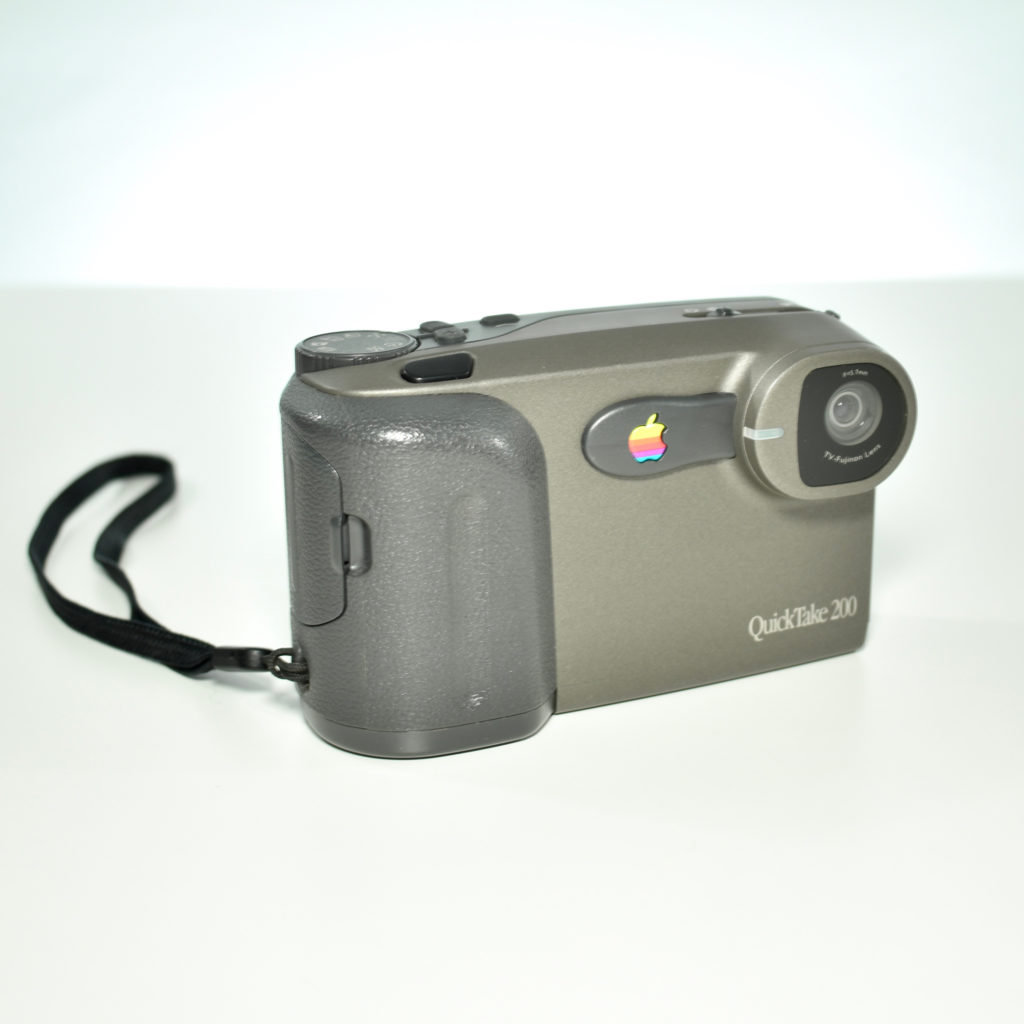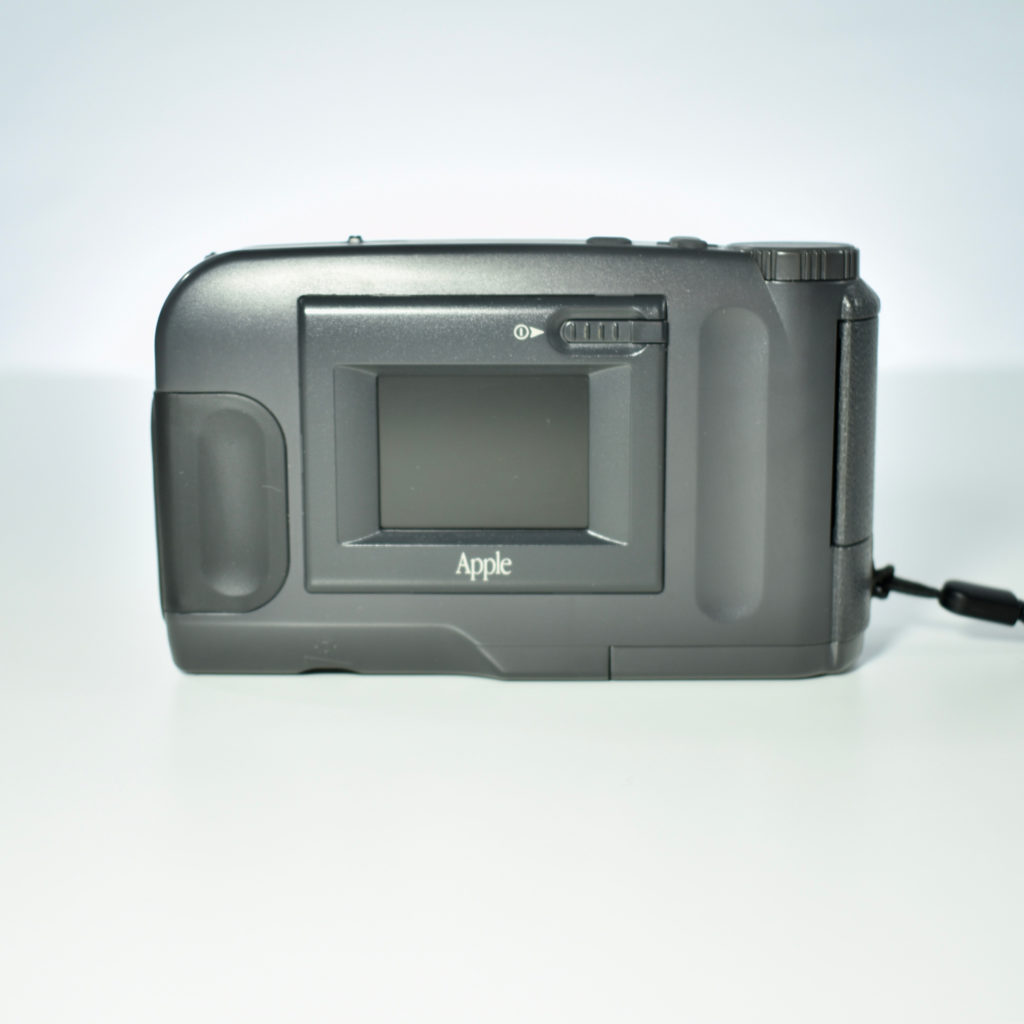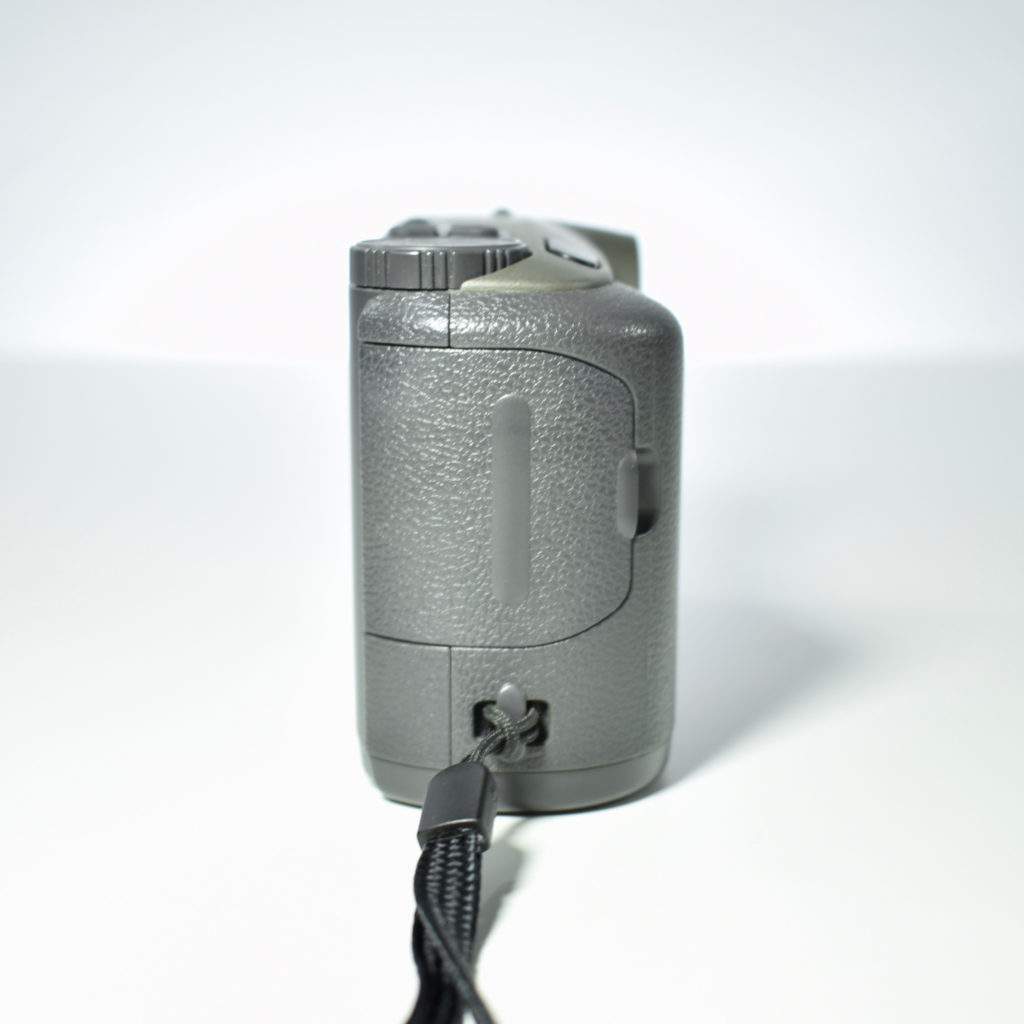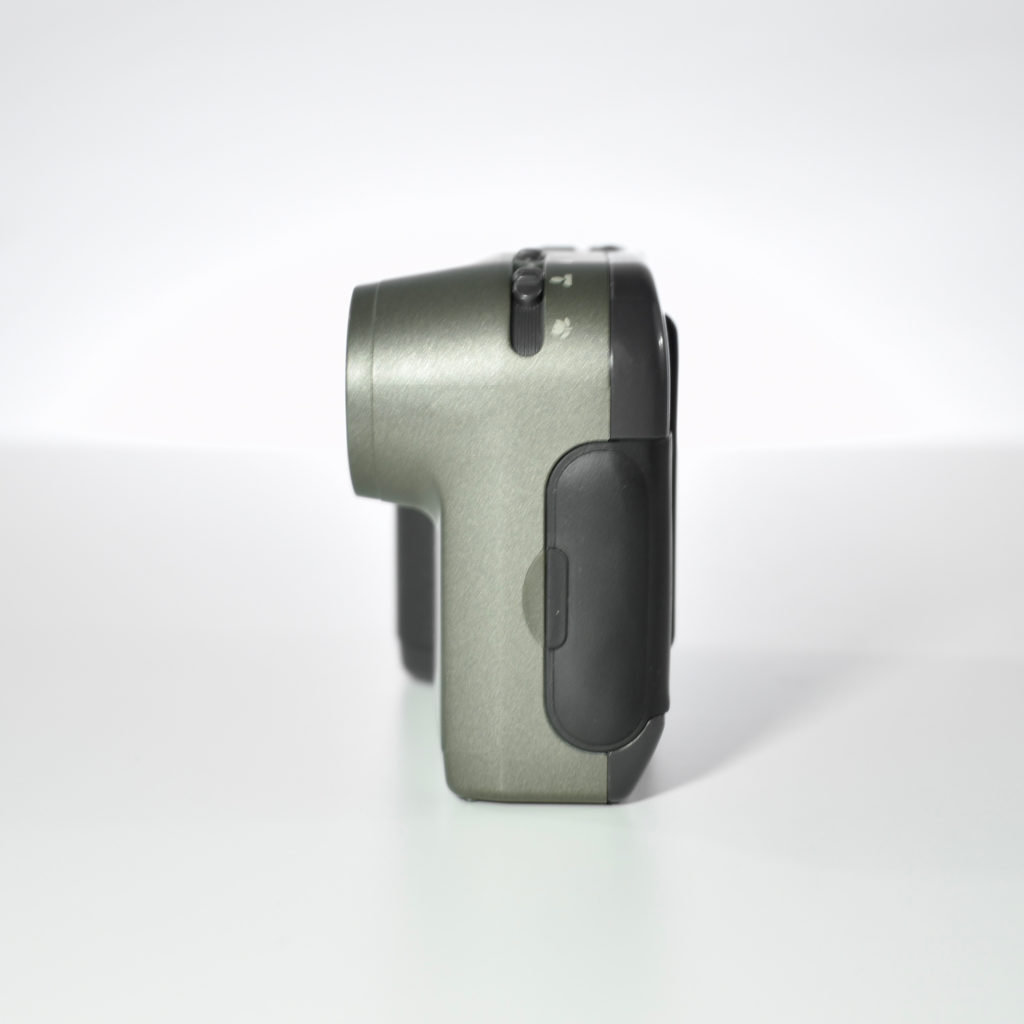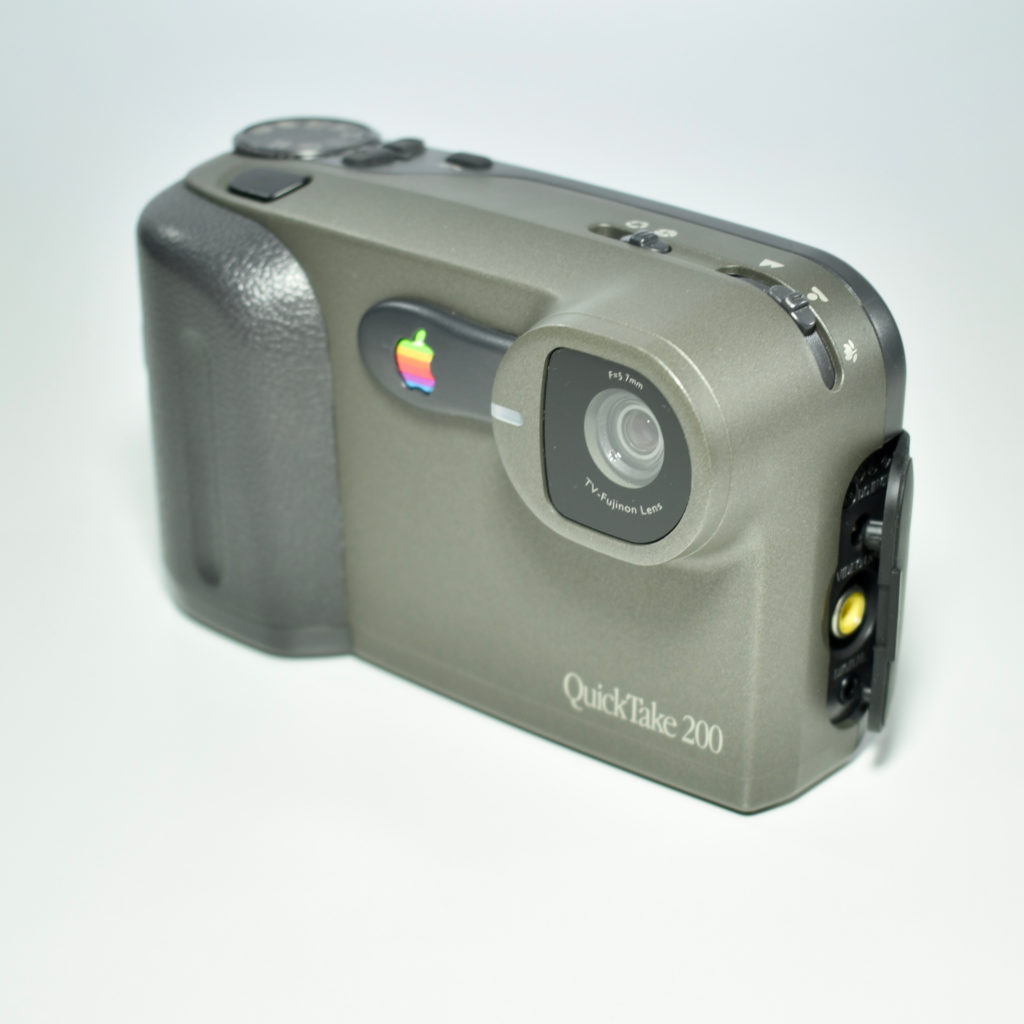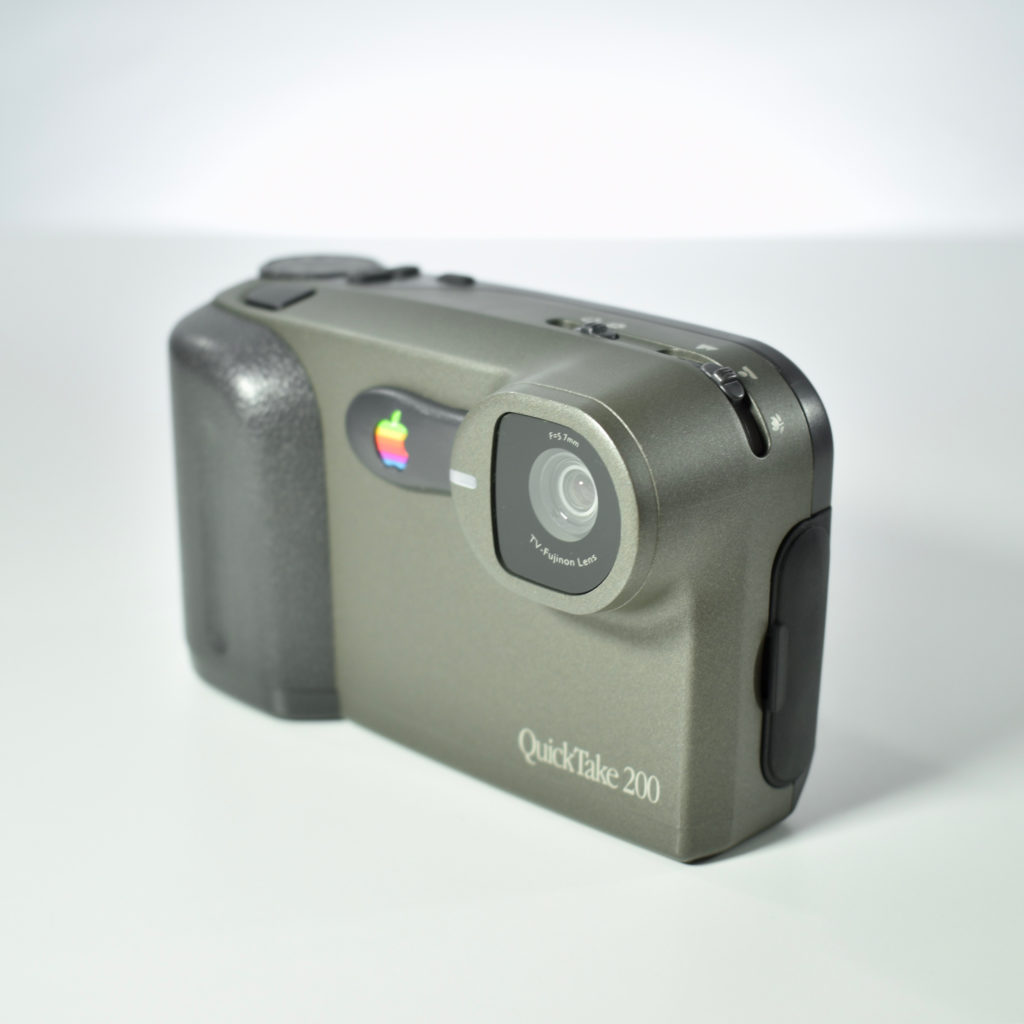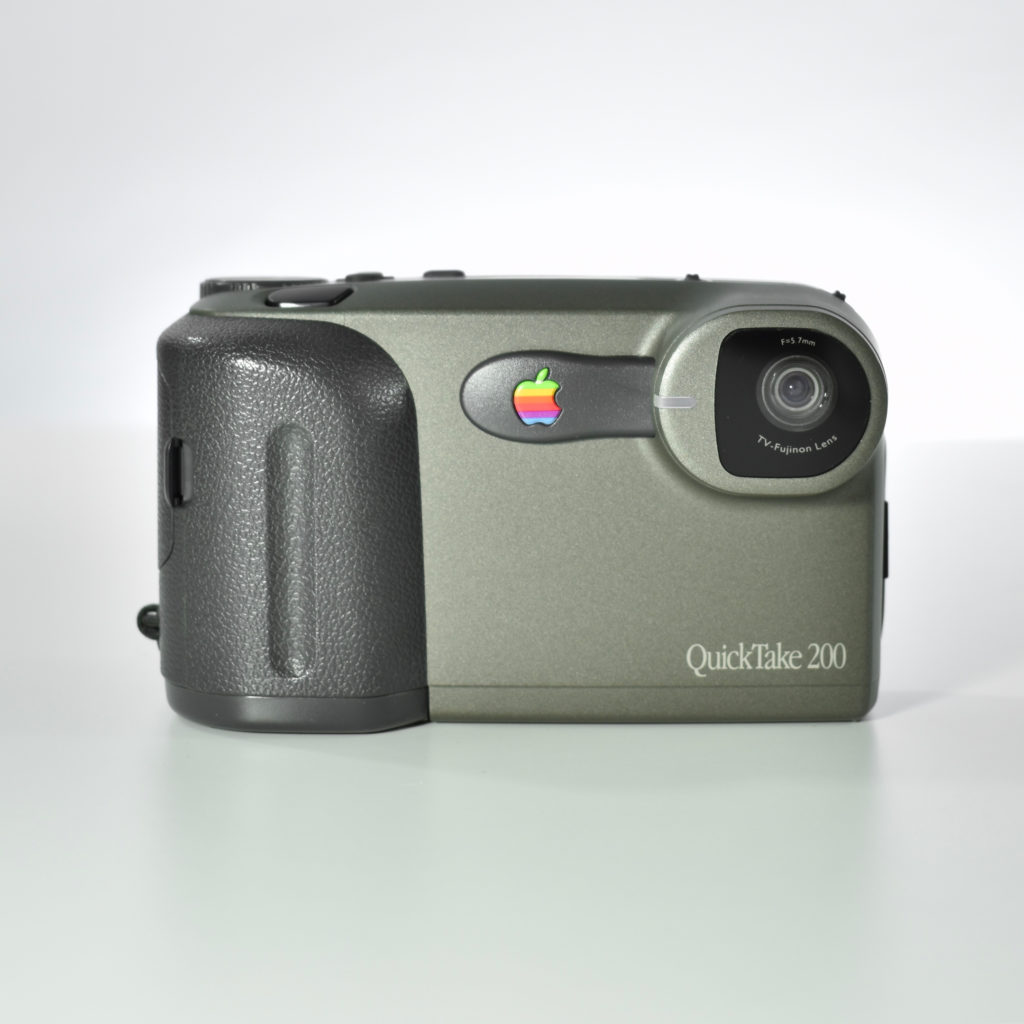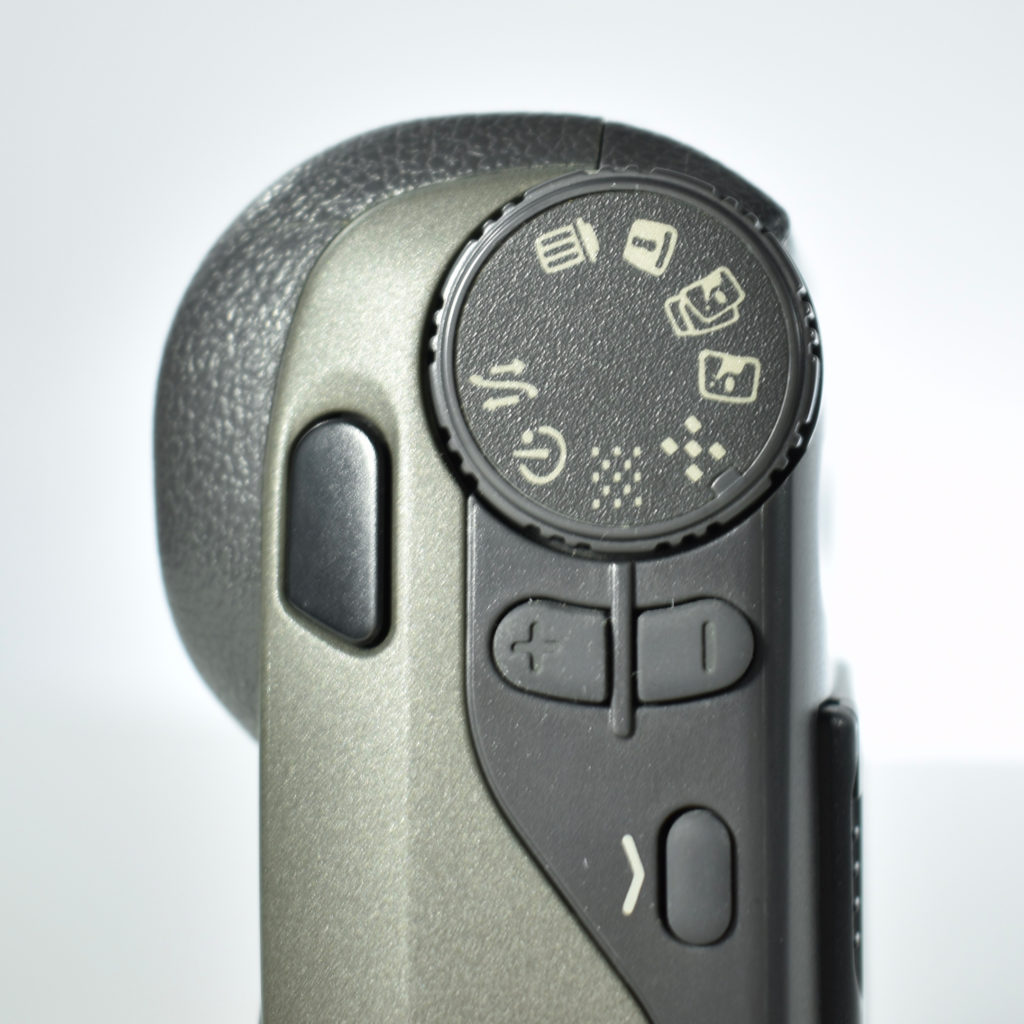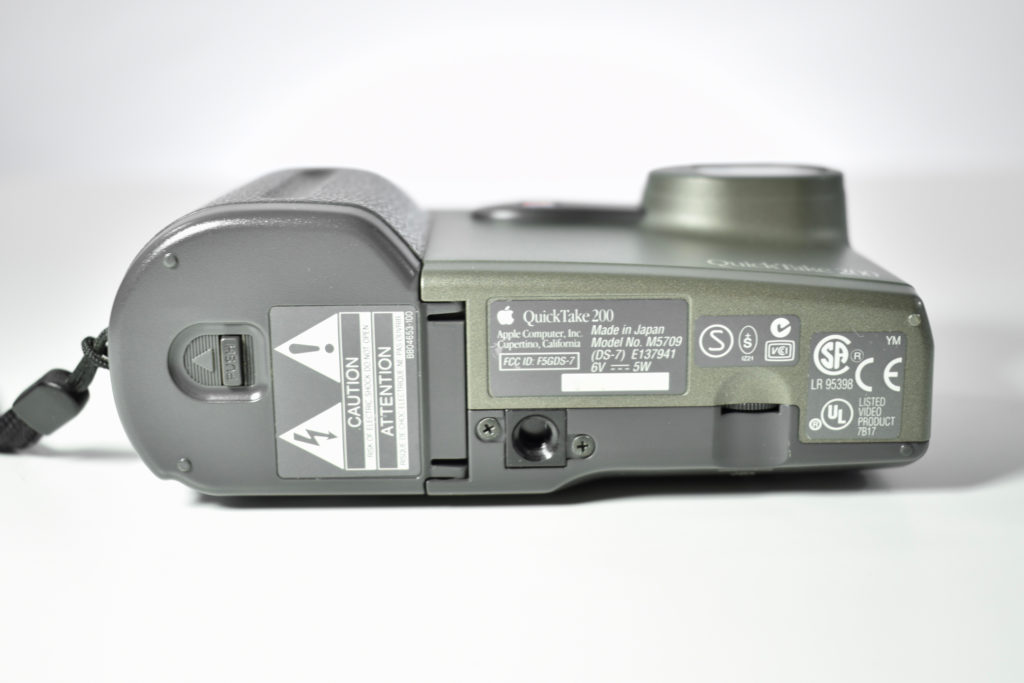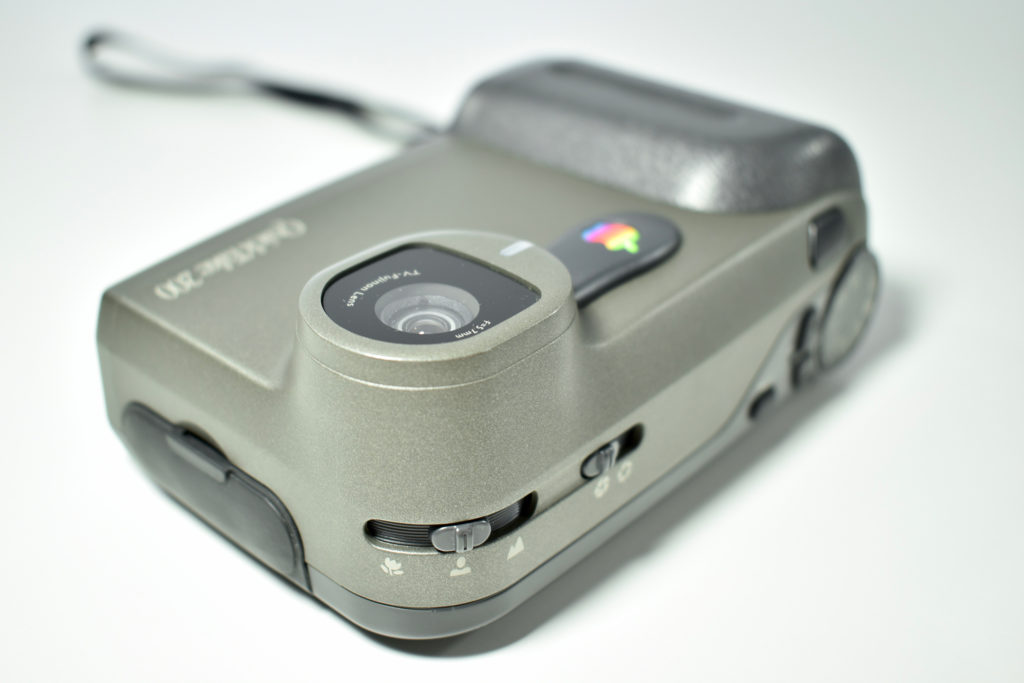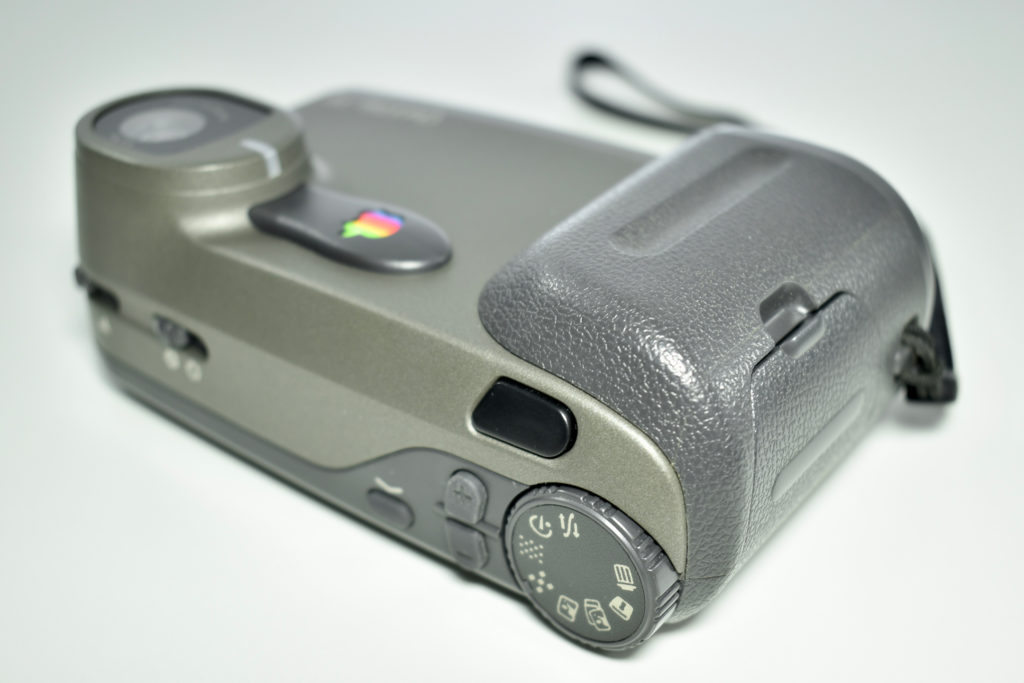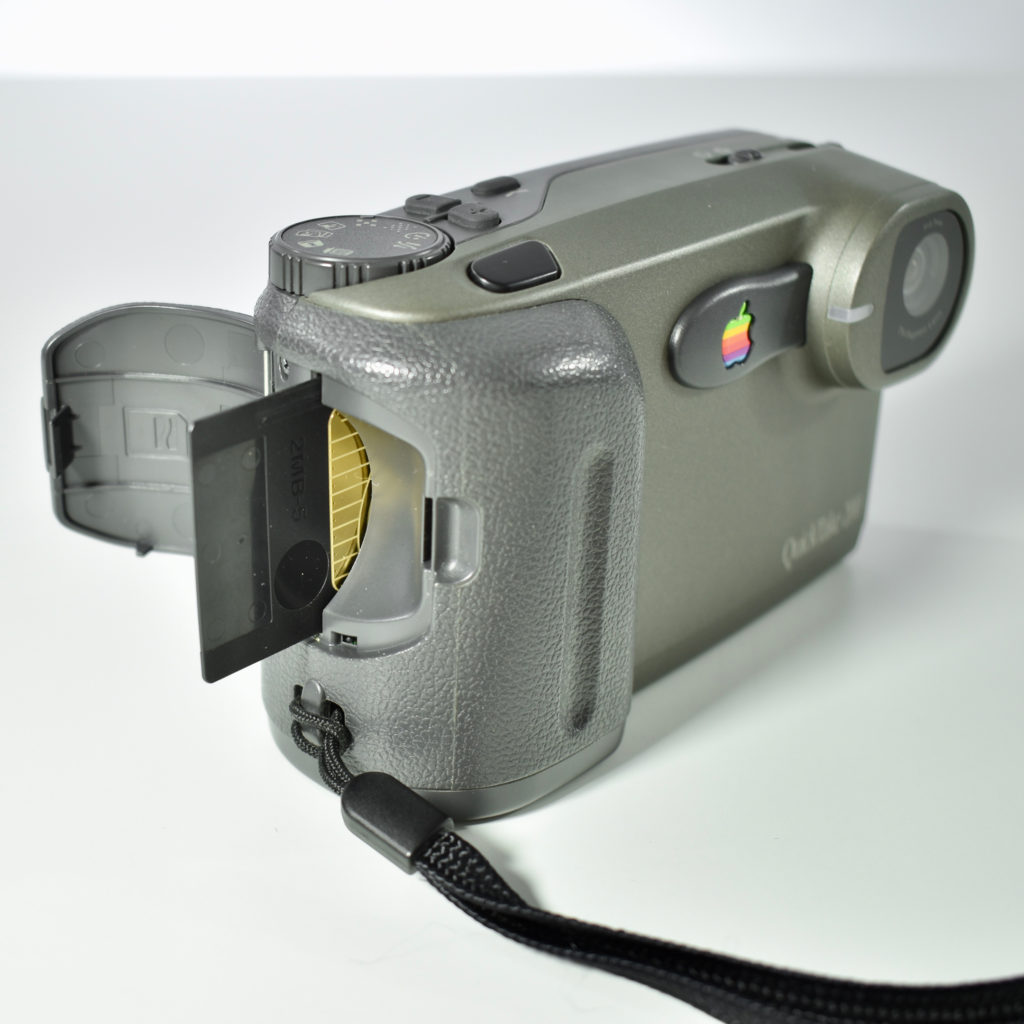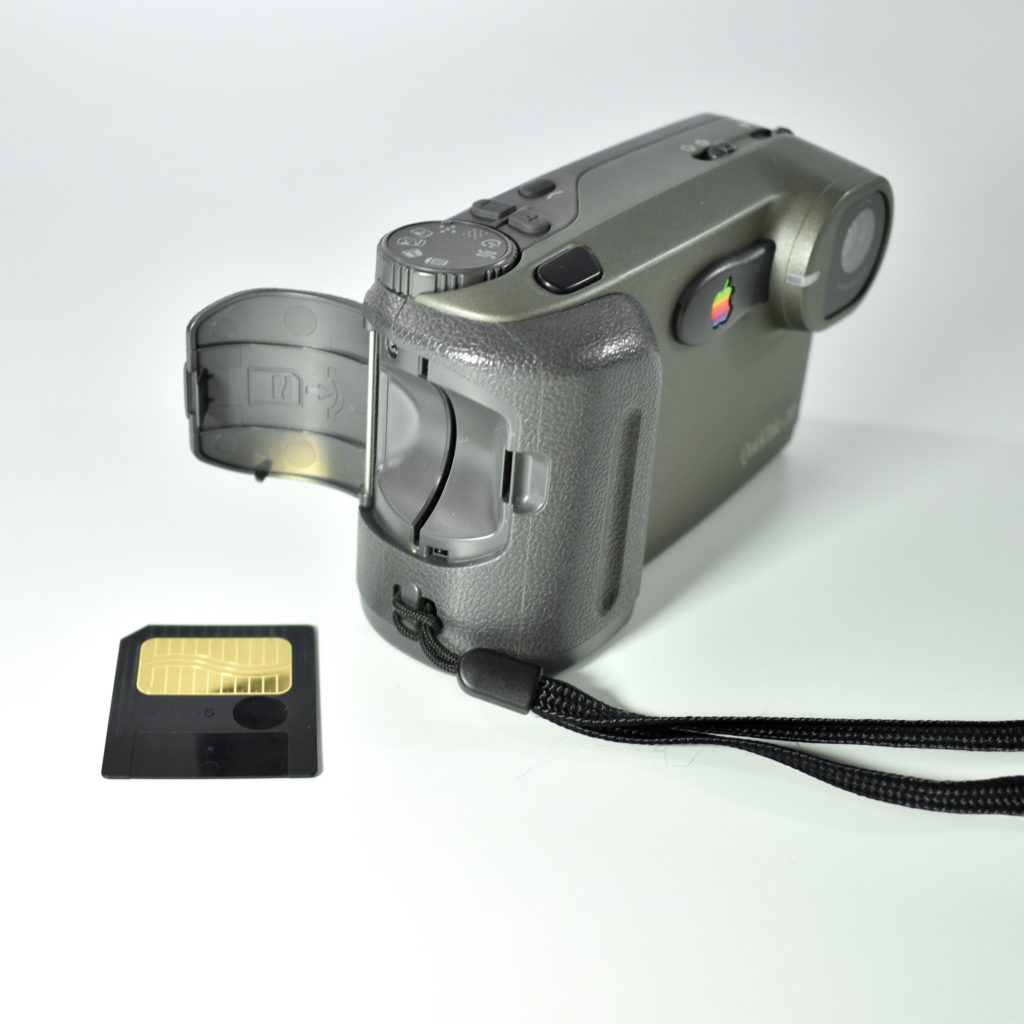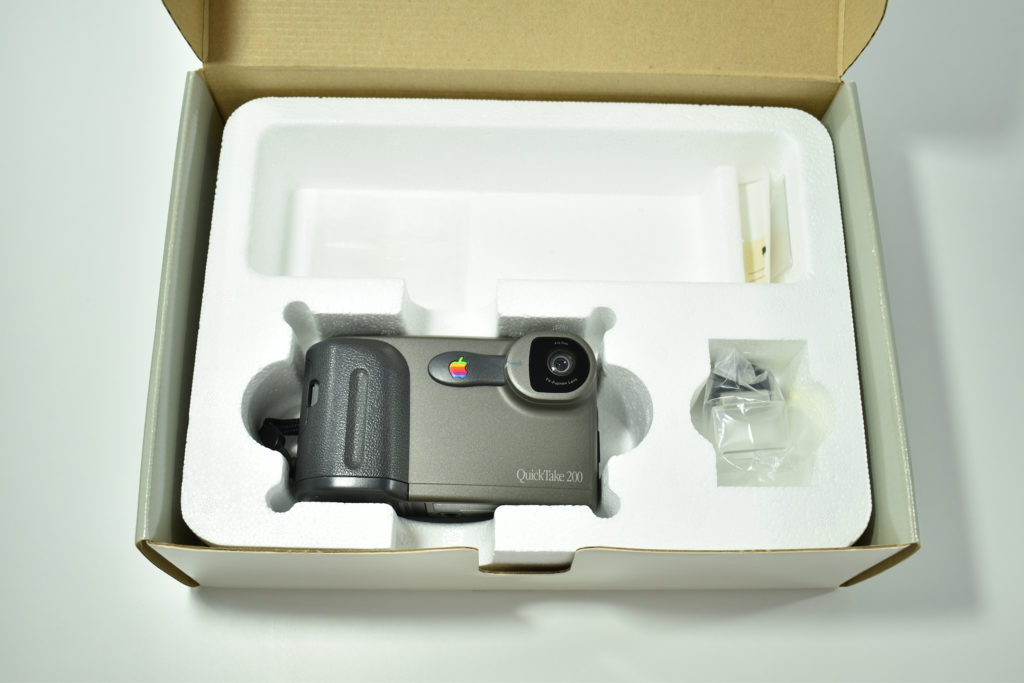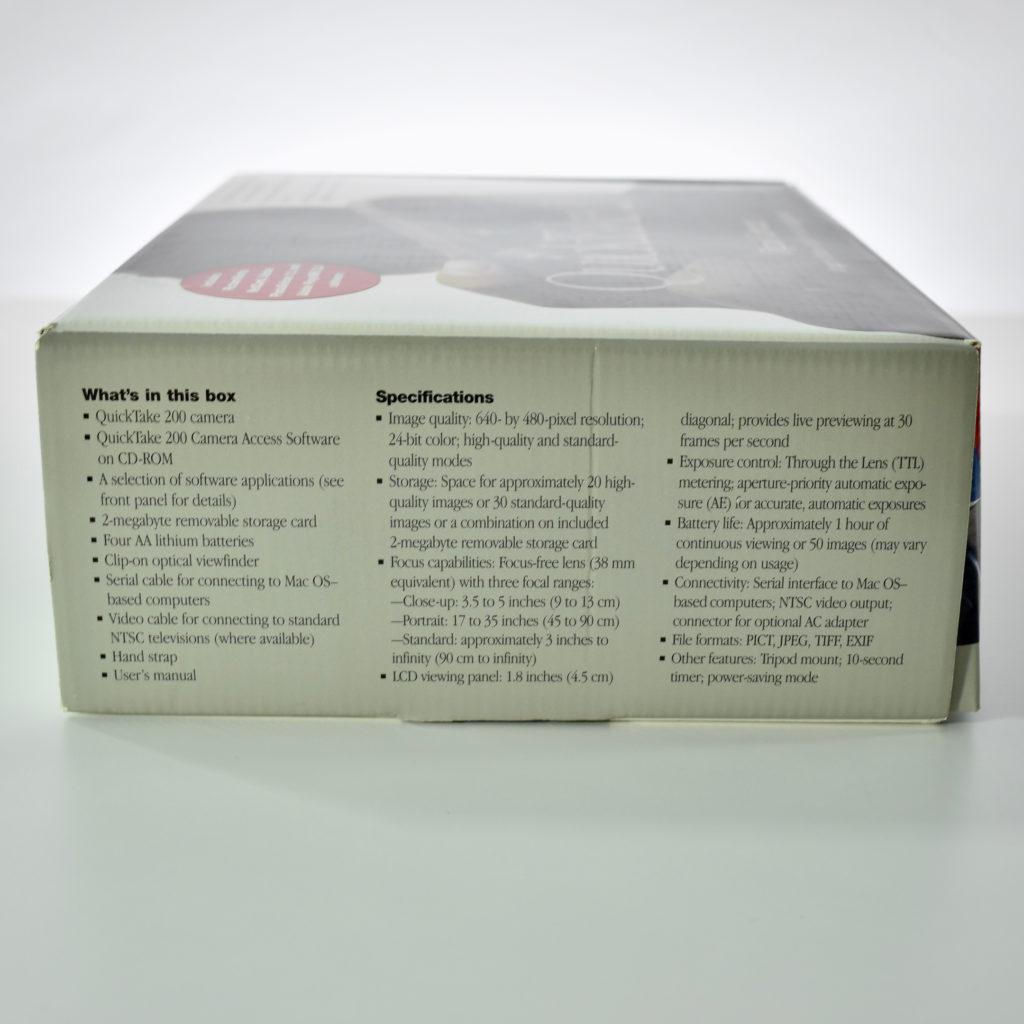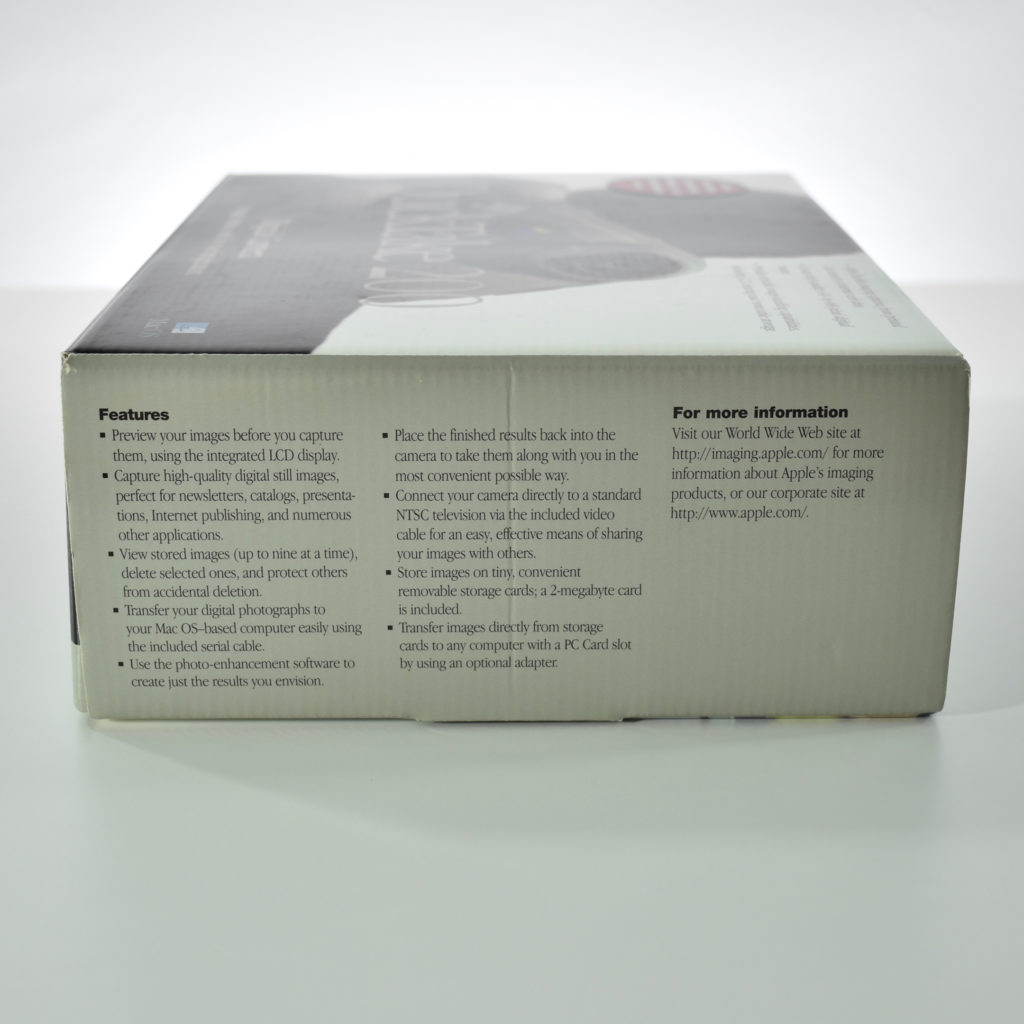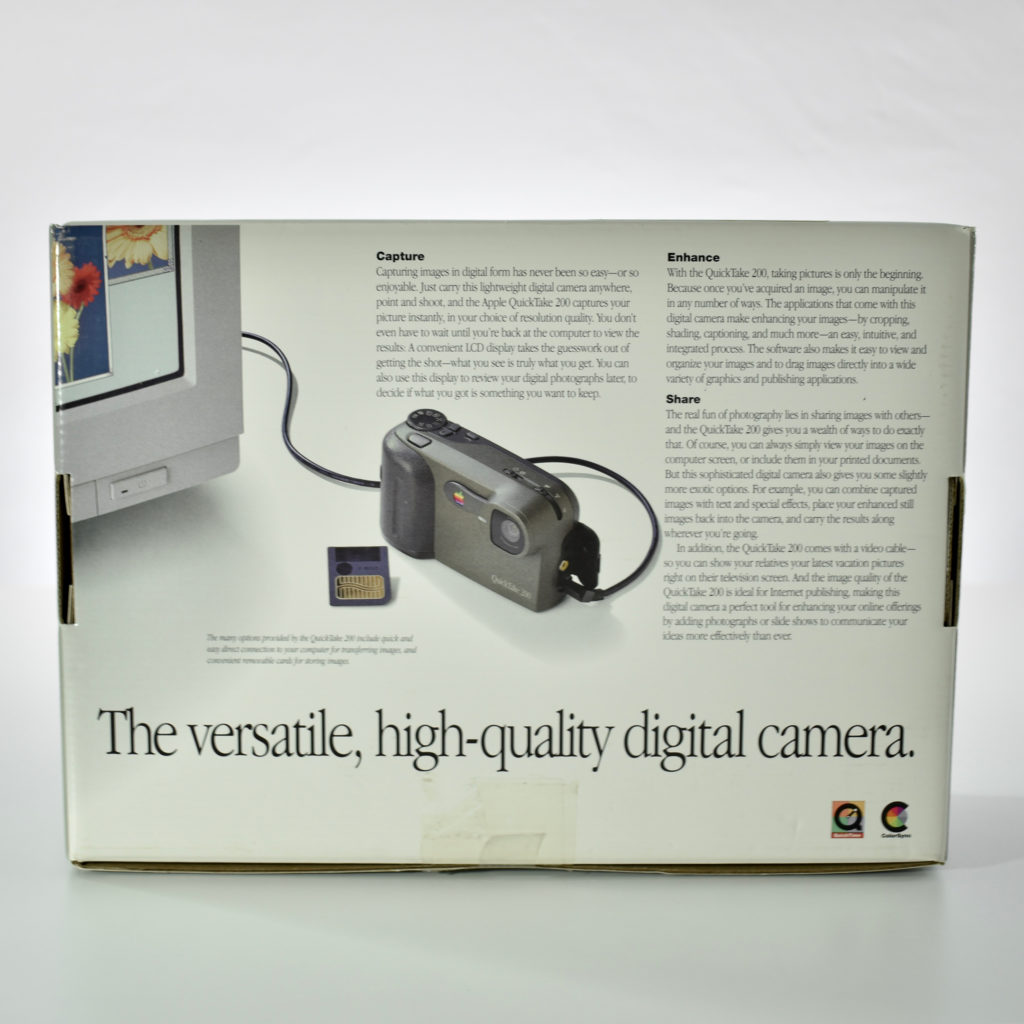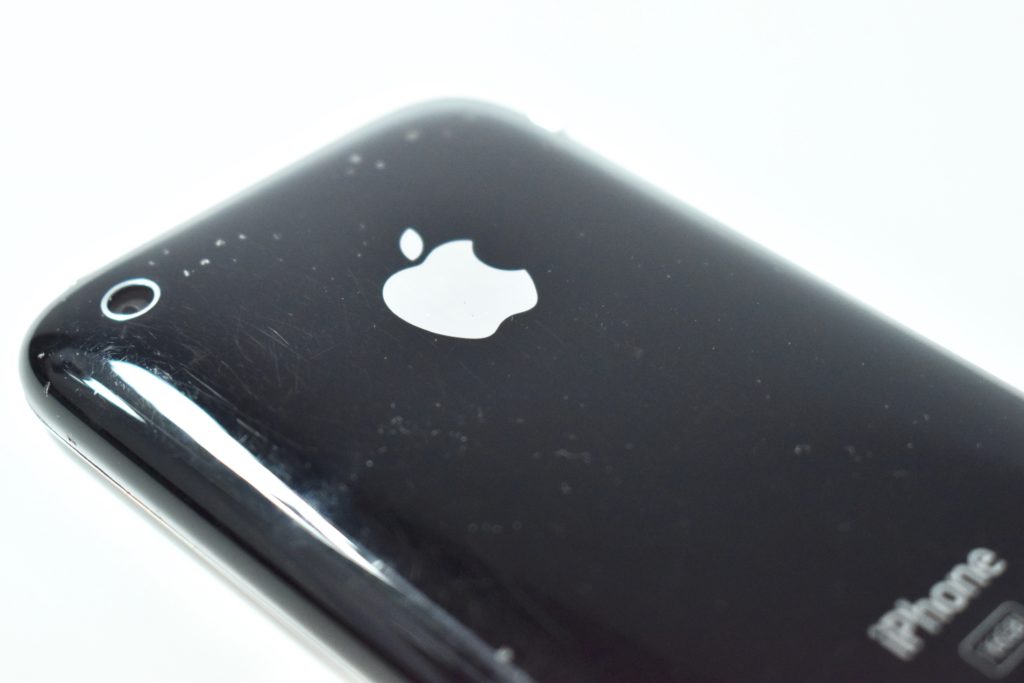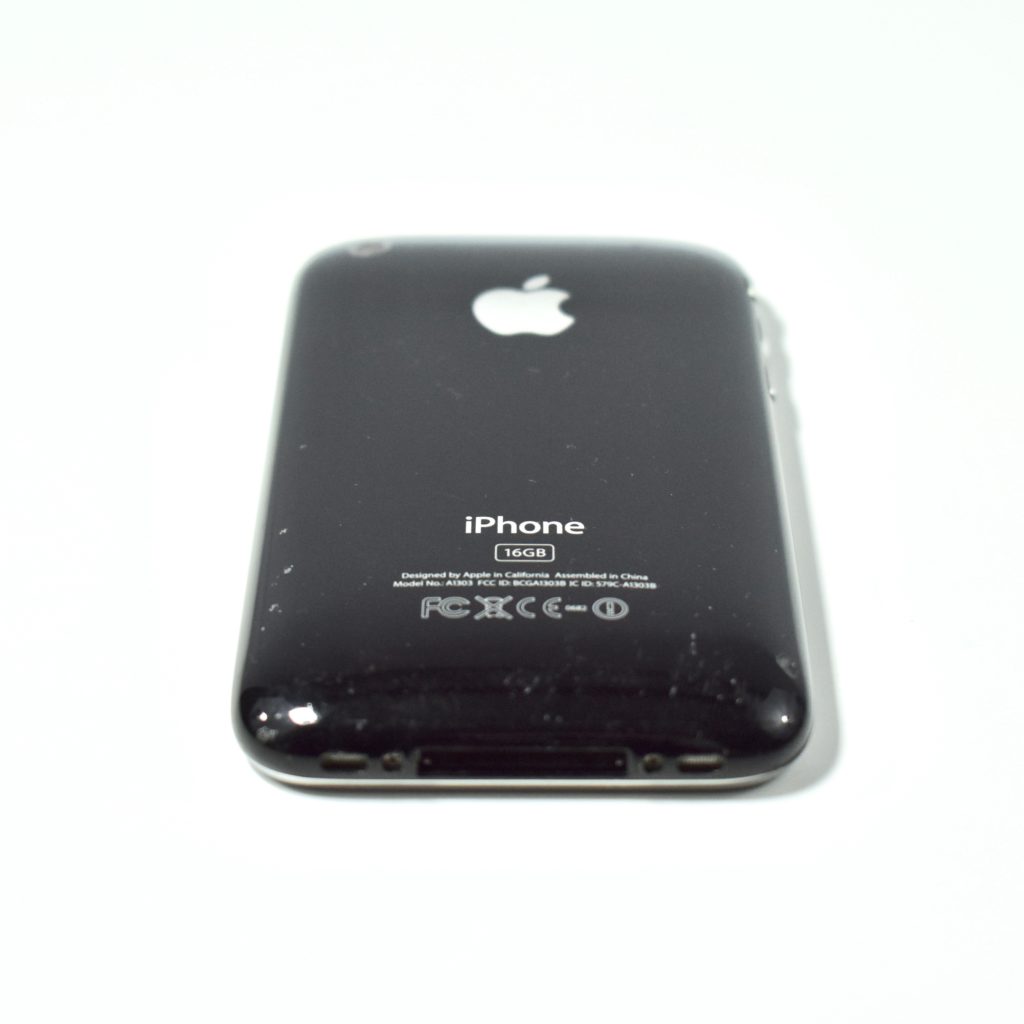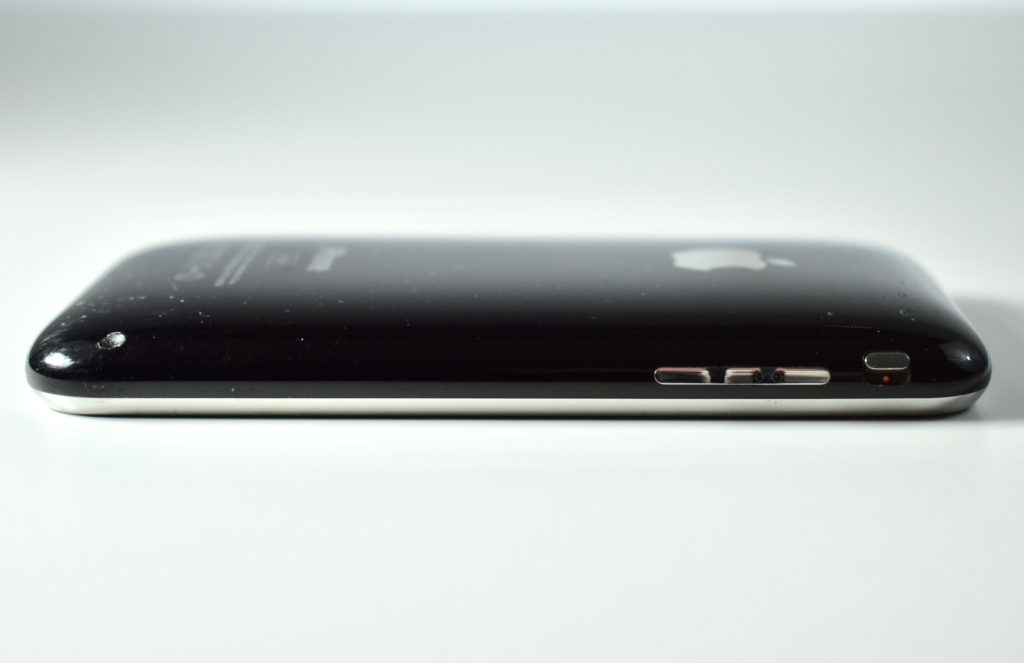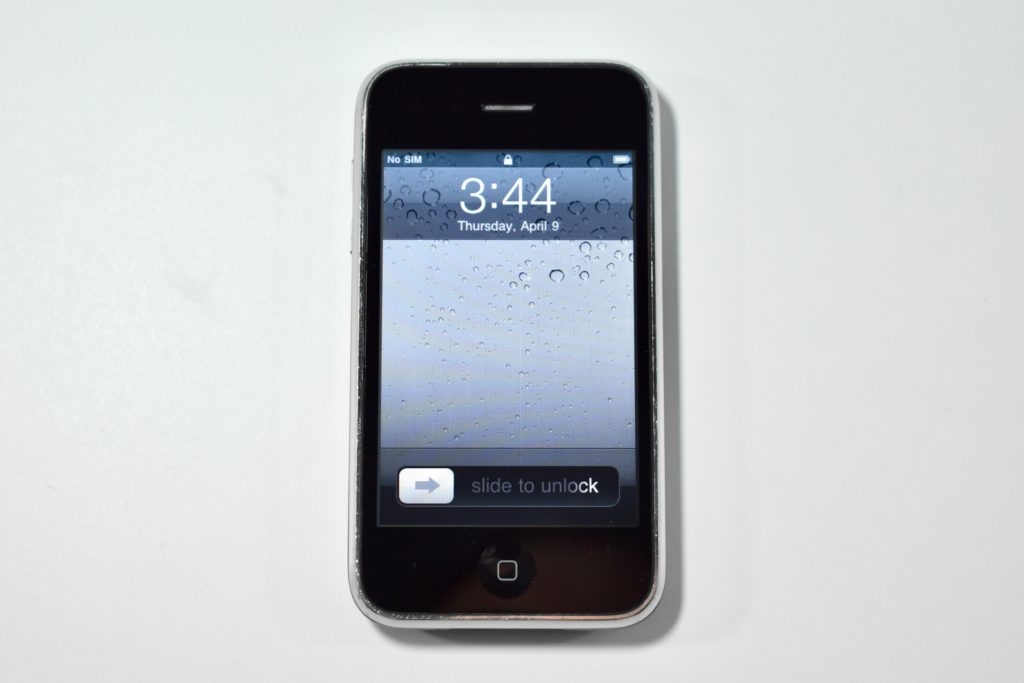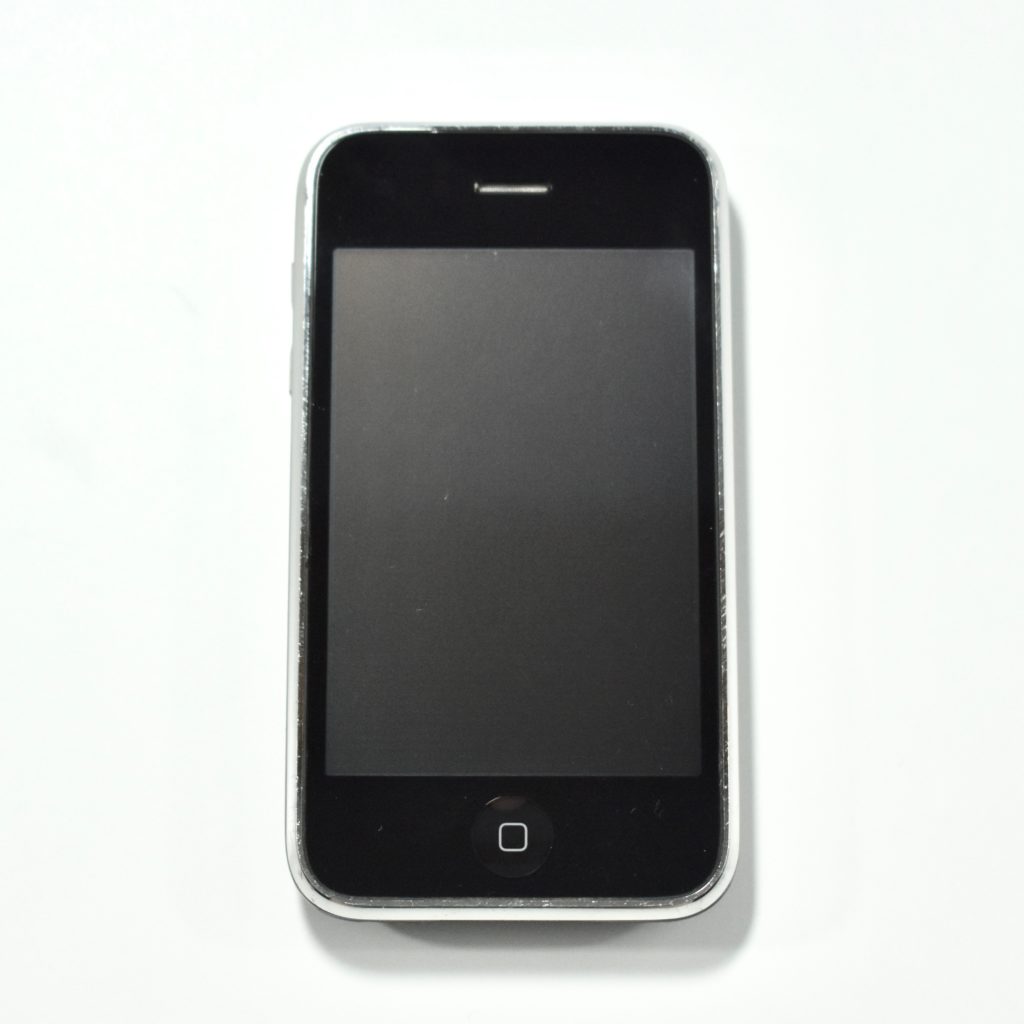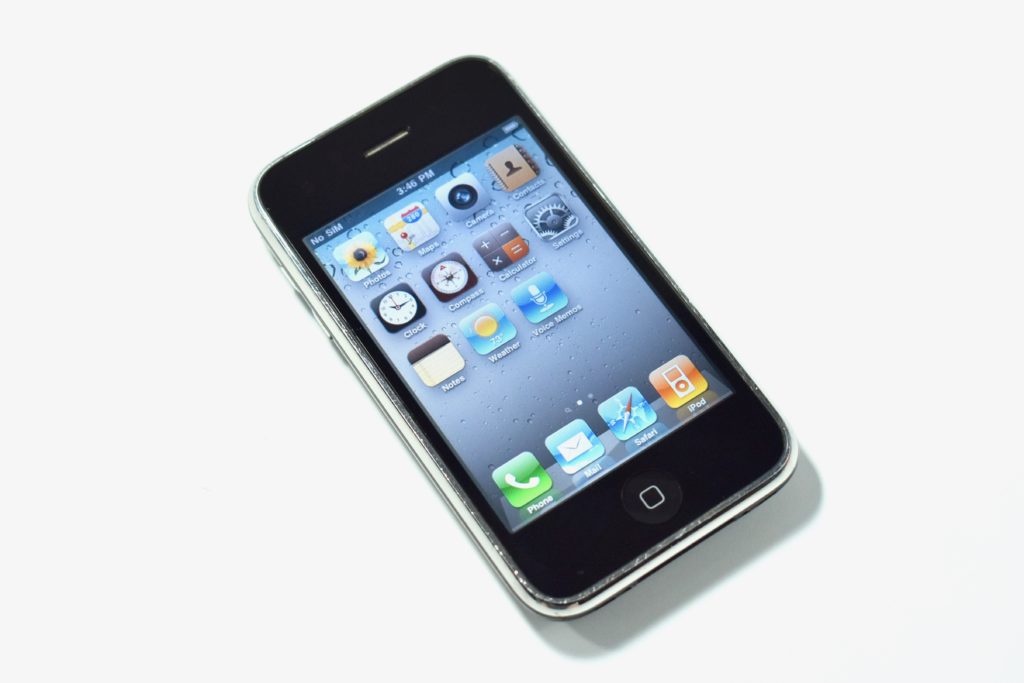The QuickTake 200 was the third and final digital camera by Apple. It was released in 1997 and was built by Fuji. The QuickTake 200 was a major step ahead compared to the QuickTake 100 and 150 cameras that came before it, due to its 1.8-inch color LCD preview screen, removable memory cards, and additional controls. Further, the QuickTake 200 looked and functioned more like a traditional camera than its predecessors.
The QuickTake 200 shipped with a 2 MB SmartMedia card that allowed up to 20 high-quality or 40 standard-quality photos. The camera used four AA batteries and had controls for aperture and focus with three different modes: close-up (3.5–5 inch), portrait (17–35 inch), and standard (3 feet–infinity). It also shipped with a snap-on optical viewfinder to save battery. Unlike the previous QuickTake 100 and 150, the QuickTake 200 did not have a flash.
I used the QuickTake 200 digital camera extensively both as an educator and personally. In fact, I took my QuickTake 200 on my most memorable vacation to date on a trip to London in 1998. At the time, digital cameras were not well known and it allowed me capture many more photos than I’d taken in the past on film because of the removable SmartMedia cards. By no means was the experience similar to today’s virtually unlimited mobile phone camera photography, but it was my first indication of what was coming, years before everyone had a camera all the time.
As a fan of vintage Apple, I was intrigued to notice that Apple brought back the “QuickTake” name for a camera feature in the iPhone 11 and iPhone 11 Pro cameras in 2019. The Apple Support website states, “Grab a video with QuickTake. iPhone 11 and iPhone 11 Pro have QuickTake, a new feature that lets you record videos without switching out of photo mode.”
Sources: Wikipedia, Apple Support

